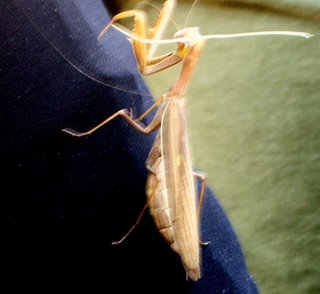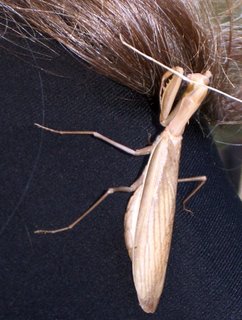July 2013
For the last year, off and on, we have been expecting that our oldest cat was on his way out. Rallying, he has surprised us time and again. This last week he had quit eating. It could only be a matter of days. We had decided that if we went on vacation, we'd have taken just him as we couldn't leave him here to die alone.
What we wanted was for him to just go to sleep-- a gentle death for a gentle cat. I can't count the times I would look to see if he was still breathing, but he held on. He'd go outside as soon as he could and lie on the grass in the new yard. He would go over to the slow soaker hose and wait for me to turn it on as he loved to get his water that way, perhaps reminding him of his younger days. He drank some milk which we bought when he stopped eating other food. Up until his last night he would jump up on the sofa to watch a movie with us. That night he came in from outside on his own four legs, but he went to his basket and didn't leave it.
July 25th, we woke to find he had died in the night. We let the other cats see his body so that they would understand what happened-- as much as maybe they can understand. Blackie would miss him as the two of them nuzzled and licked each other. Pepper never liked him and always growled or swatted if he got close. He never did anything back; so not sure what her issue was but it never changed.
For us, it was a sad event, not unexpected. In some ways, as with other elderly deaths I've been around, the essence of him had already left us. This was just the body finally giving up. We feared he'd get down at some point and we'd be forced to take him into the veterinarian to have him put to sleep. He saw his doctor the last time for his rabies shot in the spring and we all knew that there was nothing seriously wrong just the result of a body shutting down at about eighteen years old. No suffering, just more and more loss of faculties like hearing and bodily strength.
We are guessing at his age because he came as one of our strays. I remember when I first saw him at the house we had bought in Tucson. He'd be on a high shelf in the carport and run away when we came up. In the year 2000, I was at the house alone for a few months and he and I began to try to connect. I'd see him chased up trees by other cats and I'd go chase them off.
July 2000
Finally I tried directly approaching him with my hand out. He came toward me, hissing all the way. We were both taking a chance, but it was the beginning with what I called my black hunk.
He was always our hissy boy for that was the level of his violence toward other cats or humans. He had a quiet dignity that never left him. He was decidedly alpha cat in this house from the time he arrived but never did it with violence, just with demeanor.
His toughness came from having been on his own in that desert wash, which our home set above. It was a dangerous place for a cat but he had managed to survive and kill his food for at least several years. Once in awhile a rabbit's head would appear somewhere which might or might not have been his kill. I'd watch him look innocent, lying near where the birds or rodents were and spring when they got close enough for dinner.
That summer, he and I learned to trust each other, and I let him into the house not sure if he was housebroken to a box, but he was (when he was in the mood). He slept with me and when Farm Boss got down there, he hissed but accepted him too.
I couldn't take him home with me that first time as we were flying; and despite his being around us so much, we weren't totally sure that no one owned him. We asked the person who looks after our house to put cat food on the picnic table out back (which lured in a lot of birds those months) but when we came back in February, we asked again and found no one claimed him. He'd belonged to someone who had moved and asked the new owners to look after him except they really never did. He was known to the people there as B.B. and BB is what we called him for beautiful baby or big baby or black beauty. He was all of those things.
We took him to the veterinarian to get him tested for feline leukemia as we had two cats (not these two) up here in Oregon. He was fine; so he got the rest of his shots. The veterinarian assessed his age at five or six.
We were taking the van we had been leaving at our Arizona property
(big mistake as packrats made it undriveable no matter how we tried to leave it protected in its carport). We bought him a cat carrier and off we drove and learned our first important lesson about him-- he didn't travel well.
Farm Boss had gone into a convenience store after fueling up the van. BB was on my lap and when Farm Boss came out, BB panicked and pooped all over my lap. To say that diarrhea came as a surprise is to put it mildly. Those were my favorite jeans. So there I was in a McDonald's parking lot stripping off the jeans with the shelter of the door of the van (could hardly walk into the restaurant with that on them) and changing into something else. If they hadn't been my favorites, they'd have gone into a garbage can but as it was, they went into a plastic bag to be dealt with later.
From then on anytime we ever took BB anywhere in a vehicle, we could count on him to pee and poop in the first few miles, and we took him a lot of times back to Arizona as he dearly loved it there.
May 2012 Tucson
December 2012 Tucson
Even the last trip he rolled in the dirt, sniffed of the places he'd been as a kitten and then climbed the tree he had as a younger cat, surprising us tremendously. We no longer could let him just roam because he no longer could hear and didn't have the youthful strength to jump up onto the tall pool fence and then onto the roof (one of his favorite places from which to watch). So we'd let him walk around and we'd follow to give him the freedom we could without his ending up coyote food. He was our desert cat, but he did well up here also. He had particularly loved this last hot weather.
When he died, he did it with grace as he had done everything else in his life. BB lived his life fully to the end with bright eyes and alertness, even though deaf.
We buried him in our new garden. He loved being out there. It's my favorite spot to sit and I like knowing he'll be close even if not sitting under my feet. I've shed and likely will continue to shed tears over his loss even knowing this was the best way it could have ended. He had a quality life up to and including death.
You can't have a pet without accepting death as the end-- yours or theirs. He lived to a ripe old age. for a male cat especially, but he will be missed and never forgotten as is the case with all the beloved animals that we have lost through the years. I have to say though, of them all, he's among the most special in my heart.
On a positive note regarding life, that the arborist came out on Wednesday and his assessment is we won't have to cut down any of our trees. Of course, there is some risk living next to white oaks of their size and age (200 years) but there was a logical reason the branch split (drought) and we can do some things (water deeply every three weeks) to make that less likely in the future.
The crew will come out Monday and remove the limb on our roof, pruning back the branches that need to be taken out, but he gave us some ideas for creating props for the trees that are closest to the house enabling them to keep the branches that seem so much part of this place. So compromise and no tree stumps. He called them treasures and we agree with that. He also said they could well make it another hundred years. :)
Finally, the day BB died, a tiny, juvenile praying mantis showed up after Farm Boss had been trimming back a climbing rose. I always think of them as special, a symbol of stillness and peace. We settled the baby on the new hydrangea that had some aphids on its leaves. New life.
This was one of those weeks! I had Farm Boss move Quan Yin into our garden yard right above where BB is buried. I need to find my own peace about this loss. Expected-- yes. A blessing how he died-- yes. Still I grieve the loss as it was part of the love I had for him! He mattered and leaves a hole as all such losses do.

.jpg)
.jpg)
.jpg)
%20-%20Copy.jpg)
%20-%20Copy.jpg)
.jpg)
.jpg)













































